Knowing what cartridges work in your printer is incredibly important. Order the wrong product and you might end up costing your company hundreds of dollars or at least an inconvenient return shipment if the error is caught in time. Ink and toner are two completely different kinds of printer cartridges, each with their own distinct advantages and disadvantages. If you’re looking to learn more about your printer cartridges or looking for a new printer and you’re on the fence about what to buy, this article and infographic below will tell everything you need to know. Keeping reading to become your office’s ink and toner expert!
What’s the difference between ink and toner?
In a nutshell, ink cartridges contain liquid and are used by inkjet printers and toner cartridges contain powder and are used by laser printers.
The ink inside an ink cartridge can be either dye-based or pigment-based, depending on which cartridge you have. Most inkjet printers on the market traditionally include dye-based inks. They are more economical than pigment based ink cartridges and are appreciated for their ability to produce vibrant, true to life color prints and photos. Dye-based inks are not waterproof and can be susceptible to smudging, with many prints tending to fade after 25 years. Pigmented-based ink offers a crisper finish and a quicker dry-time than dye-based ink. It is valued by professional photographers and graphic designers for its ability to print archival quality images and text. Pigment ink also tends to resist water and UV light better than dye-based ink, and is able to resist fading for up to 200 years.
Toner is a dry powdery substance that won’t stain like an ink cartridges, but it can get messy if handled improperly. Monochrome laser printers print with just a black toner cartridge. Color laser printers use four separate black, cyan, magenta and yellow toner cartridges to produce a print. The drum unit is another very important term you should also be familiar with, because without it, you won’t be able to print! The drum works with the toner cartridge to fuse the toner powder to paper. A drum unit can be built into the toner cartridge or sold separately as a single unit, depending on the consumable requirements of your printer. Toner cartridges with a built-in drum unit are generally more expensive than a single toner cartridge but most consumers find them more convenient because you never have to worry about replacing the drum. Every time you buy a new toner, you are essentially replacing the drum. Separate drum units can typically be replaced after the use of 3-4 toners. To learn more about the difference between a toner and drum unit, check out our blog article on the topic.
Who should use it?
Now the big question, which printer is right for you? It all boils down to your printing needs!
Inkjet printer advantages and disadvantages…
Many families, photographers and small home offices prefer inkjet printers. Every inkjet machine prints text, color images and photos. All-in-one inkjets include some combination of fax, scan and copy functionality too. If you plan to print at a small volume on a regular basis or are in need of quality photos, they are a solid choice. However if you are not careful, cartridge replacement may get pricey (more on that later). There are two common ink cartridge combinations. Some printers require just two ink cartridges, a black and tri-color. The tri-color handles handles your color prints, but the downside is you’ll need to replace the entire cartridge if one color is running low. Other printers use individual ink cartridges. You’ll find most printers require a black, cyan, magenta and yellow cartridge but some photo printers may require additional cartridges like a light cyan or light magenta.
Laser printer advantages and disadvantages…
Consumers with high volume printing needs will likely want to go with a laser printer. These machines are best suited for small-medium businesses and schools that print a lot of text heavy documents and color prints. Although the technology seems to be improving every year, photo printing is not recommended on a laser printer. Due to the powdery nature of the toner cartridge, photos can’t reproduce the same tonal distinctions as an inkjet printer and photos tend to end up looking dull. We aren’t saying photos can’t be printed with a laser, but if you are photographer, you’ll likely be dissatisfied with the results. We recommend buying a monochrome laser printer if you just need to print in black. Color laser printers are available for those needing to add a a bit of color to everyday documents. Similar to the all-in-ones mentioned previously, multifunction laser printers provide print, scan, copy and fax capabilities. Practically every printer these days is Wi-Fi ready as well, meaning you can print wirelessly from your laptop, tablet or smartphone.
For more tips on choosing the right inkjet printer or laser printer, check out a few of our in-depth articles here:
What’s the Best Inkjet Printer for Home and Office Use?
What’s the Best Laser Printer For Home and Small Business Use?
Which printer cartridge is right for me?
Deciding what features and print options you are looking for in a printer is just part of the story. The cost of printer cartridges is an equally important factor to consider and often overlooked by first-time printer buyers. It is no secret that cartridges can be expensive. Cartridge price, cartridge size and the number of pages you get from a cartridge varies wildly across printer models and what printer you choose can ultimately make or break a printing budget, depending on the cost efficiency of its cartridges. First time buyers are often swayed by a big box store’s weekly printer sale, only to later find out that cartridge replacements cost twice as much as the printer. Please don’t get stuck in that trap. Before you buy, map out operating costs for the life of the printer and make sure those costs line up with your printing needs and budget. We will show you what to look out for here:
Cartridge Cost Considerations
Page Yield
Every cartridge offers a specific page yield, or an estimated number of pages you can expect to get from a cartridge. Page yield is different for every cartridge series and is based off a 5% page coverage. In order to hold manufacturers accountable to the same standards, every cartridge is subjected to page yield testing based on ISO/IEC 24711 specifications. This test helps determine what the page yield of an ink cartridge will be, giving customers a reliable way to compare competing products.
Cartridge Size
Cartridges come in a couple of different sizes so understandably their page yields vary. High yield or XL cartridges print much more than a standard cartridge and are generally a better value for consumers with high volume printing needs. Standard yield cartridges are less expensive than high yield cartridges and are good option for consumers that print occasionally. Some printers offer extra-high yield cartridges as well, consult the specs on your manufacturer’s website to see if this cartridge option is available for your printer. To learn more about how printer manufacturer’s name their cartridges, check out our cartridge naming guide.
HP 63 – This standard size ink cartridge prints 190 pages.
HP 63XL – This is the larger version (high yield) prints 480 pages.
Cost Per Page
Cost per page is the dollar value you will be spending per page to print a document. To determine the cost per page for a particular printer, check the printer’s cartridge yield. Cartridges with a higher page yield are generally more efficient in the long term. We’ll illustrate this by breaking down the cost per page of an HP ink cartridge and compare it to a Brother toner cartridge.
An original brand standard yield HP 63 black ink cartridge offers a yield of 190 pages and sells for $21.99*. Cost per page is calculated by dividing the page yield by the cost of the ink cartridge, offering a cost per page of 11.5 cents.
The high yield original HP63XL black ink cartridge is priced higher at $41.99 but offers more prints. Given a yield of 480 pages, the cost per page is slightly better at 8.7 cents.
Laser toner cartridges, like the Brother TN850 cost more than your typical ink cartridge but they print a lot more too. The original TN850 sells for $115.49 and yields 6,000 pages, or cost of 1.9 cents per page. The TN880 super high yield is about 15 dollars more and prints 12,000 pages at 1-cent cost per page.
Ways to Save Even More on Printing Costs
Compatible brand cartridges from LD Products offer comparable print quality and page yield to an original brand cartridge for a fraction of the cost. Choosing a compatible cartridge will bring your cost per page down significantly and best of all, they are backed by an industry best lifetime guarantee. For example, our LD brand compatible HP 63XL cartridge offers the same page yield as the original cartridge for half the price. Currently selling at $26.99, this brings the cost per page down to 5.6 cents. The TN880 laser toner cartridge is an even better deal! We sell a compatible for $27.99, offering a page yield of just .23 cents! We carry thousands of compatible options for practically every printer model on the market, check them out on our website.
For a quick breakdown of the key differences between ink and toner, check out our infographic! If you have any questions about printer cartridges or are looking for suggestions on what printer to buy, reach out to us in the comments.
*Savings based on price comparison between remanufactured/compatible cartridge prices on www.LDProducts.com and OEM cartridge and printer prices from the listed retailers: Staples. All prices effective as of June 27, 2022. OEM names are registered trademarks of their respective owners and are not affiliated with, and do not endorse LD Products.


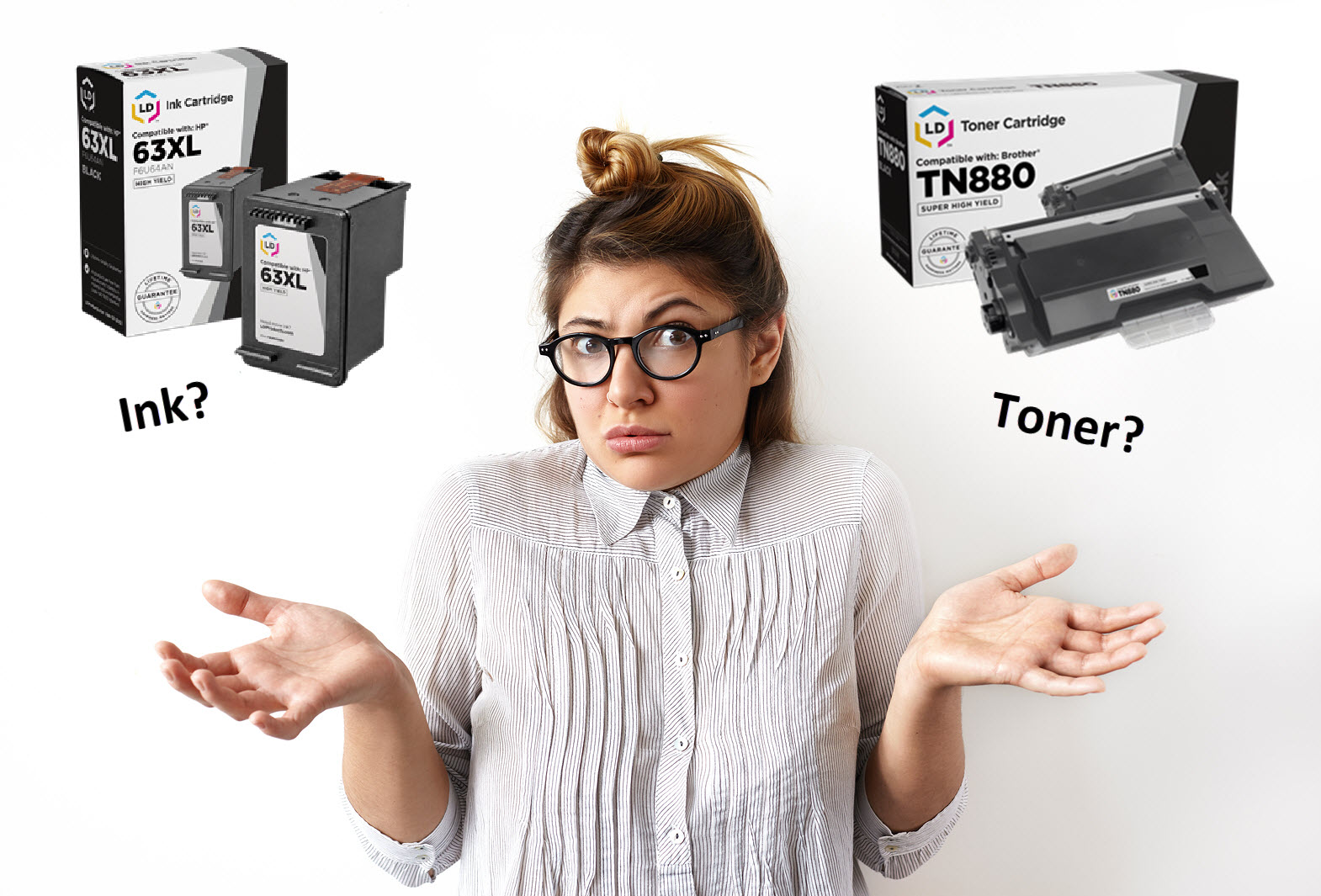


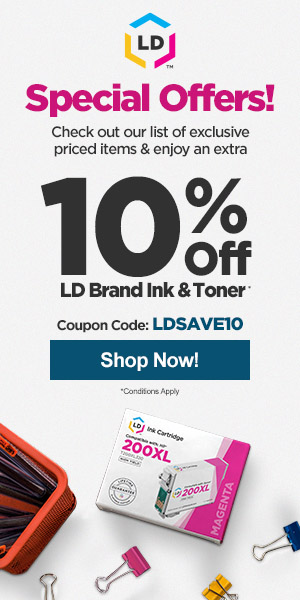

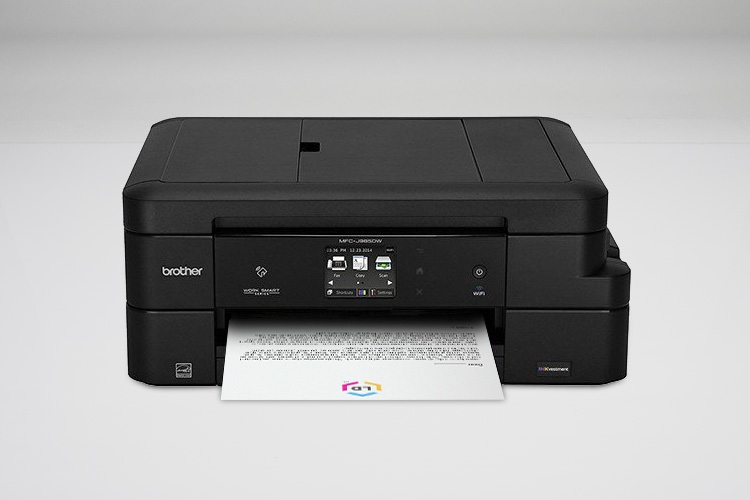

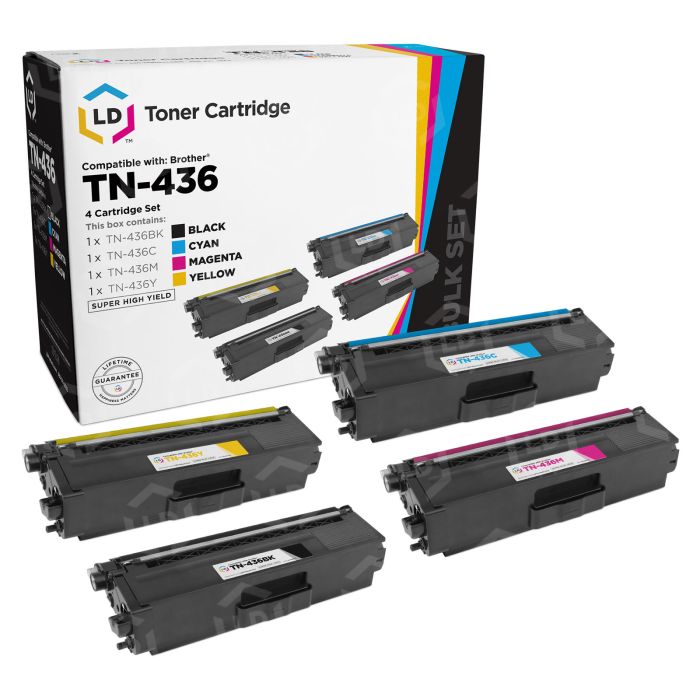

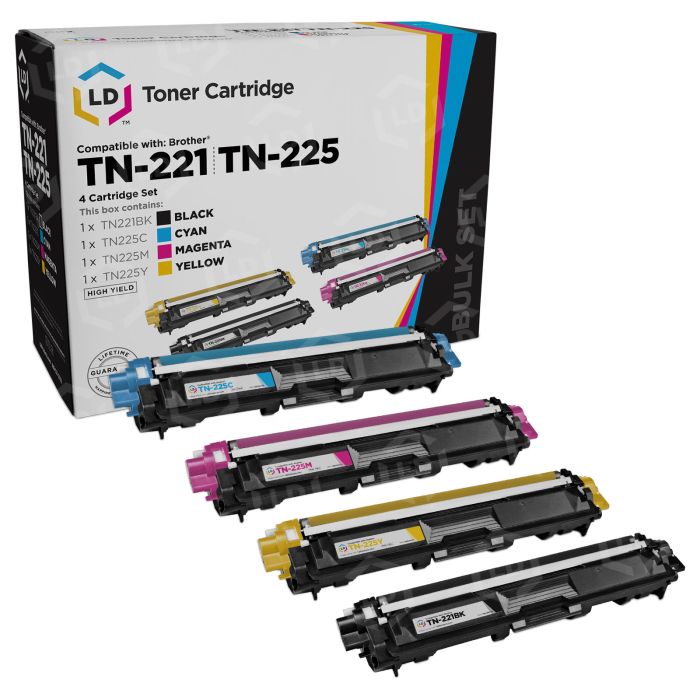
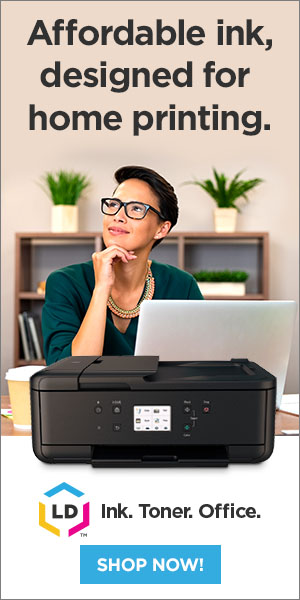
I don’t print often but when I do my ink cartridge is full but it won’t print because the ink has dried will buying a printer with a toner cartridge solve my problem. I have clean and did all of the requirements you are suppose to do but no page will print unless I buy more ink
Yes, a toner cartridge is a good solution if you don’t print often. Toner cartridges do not dry out like ink cartridges and should last in your printer for a long time with infrequent use.
I have an Epson 4 cartridge ink jet printer and a lot of times after printing successfully for awhile I will get a message on my computer that the ink cartridge is not compatible with my printer. It is not an Epson cartridge.
Try cleaning the metal contacts on your cartridge with a lint-free cloth. The fact that it prints successfully initially makes me rule out the possibility of a chip error so I wonder if the contacts get dirty after printing awhile. Let me know if this works!
I am a Snowbird and have a home ‘up north’ and one in Florida. Rather than bringing down my ink-jet printer, I purchased the identical printer for both places. Previous experience with ink-jets had its cartridges drying out when away for 5 to 6 months no mater what I did. Even taking them out and wrapping in cling wrap did not help. With identical printers, I could bring just the cartridges with me. This worked… sort of. Still had problems when inserted into different printers.
NOW I have 2 identical Laser printers and I leave the toner cartridges in them year round. The freezing cold of the north, or the sweltering heat of the south does not seem to cause any problems. Neither does the 5 to 7 months of inactivity. After buying my 1st replacement toner from the printer manufacturer (at a high cost), I have bought replacements from LD (at a much lower cost) and they have worked great. Will continue to purchase replacements from LD.
I’m really surprised that it has not been mentioned anywhere that inkjet printed papers smear if they come into contact with water. This is a major drawback. Rain drops, condensation, juice, sweat, trapped moisture (for example: from a paper flyer in a plastic sleeve outside), etc. all can cause the print to get completely smudged and wiped away. I can’t tell you how big of a deal this is. If you have an important paper printed with an inkjet printer, and you get even one drop of water on it, it will smear a massive ugly streak for whatever length of paper it comes in contact with. With laser, it has no effect. Once the drop dries, there will just be a tiny watermark on the paper itself, if anything. But no effect on the print. Inkjet prints are extremely susceptible to water.
In essence, for busy everyday lives, laser is much more permanent. I say this from experience using both for a fair amount of time.
Hi Tony, great point! Thanks for the feedback 🙂
Excellent article about ink cartridges vs. toner cartridges!
[…] fix the Brother Printer issue, the first thing a user needs to do is to reset the toner cartridge. Resetting the toner cartridges will help the user to fix any printer issues. So without any delay, follow the given […]
Thank you for this article and the graphics – very helpful. Thank you also to those who left comments about their experiences – also helpful. I feel more informed now going into the search for a new printer.